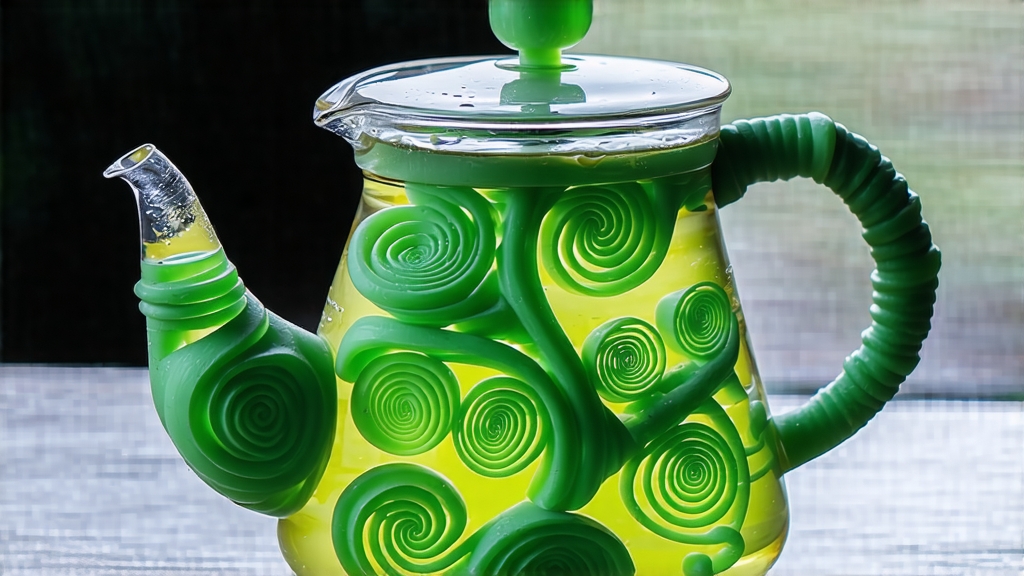
Among the emerald tapestry of Chinese green teas, none carries the romance of lake mist and imperial intrigue quite like Biluochun. Originally named “Xia Sha Ren Xiang” (“scary fragrance”) by Qing-dynasty courtiers who were startled by its explosive aroma, the tea was later rechristened by the Kangxi Emperor himself: Bi Luo Chun, “Green Snail Spring,” a nod to its tight spiral shape and early-spring harvest. For four centuries the tiny leaf scrolls have been rolled between the thumbs and index fingers of farmers on Dongting Mountain, an island of granite and orange groves rising from Taihu Lake in Jiangsu Province. There, a micro-climate of drifting fog and reflected water light slows the sprouting of the tea bushes, concentrating amino acids and giving the liquor its signature sweet, almost marine freshness.
Although the name is legally protected, the market still divides Biluochun into three micro-origin grades. “Original Grove” bushes, descendants of the 800-year-old mother trees that climb among the citrus, yield the rarest Ming-qian lots picked before the Qingming festival. “Mountain Outskirts” gardens on the western slopes receive slightly longer sun, producing a bolder, more astringent leaf. Finally, “Taihu Extension” plantings on the northern shore supply the commercial grades that carry the fragrance if not the ethereal texture of the mountain core. Whatever the elevation, only the standard two-leaves-and-a-bud pluck is accepted; anything larger is diverted to cheaper baked teas.
The craft begins the same night the buds are picked. Withering is skipped—Taihu humidity is high enough to keep the cells supple—so the first step is a 3–5 minute kill-green in woks held at 180 °C. The master’s palm tests the surface: too hot and the leaf sticks, too cool and the grassy note lingers. A single kilo requires 70 000 buds, and each wok holds barely 250 g, so firing proceeds in ballet-like shifts. When the leaf turns jade and exudes a cooked-bean scent, the temperature drops to 80 °C and the rolling starts. Using only the heel of the hand, the maker presses and twists the pile along the wok’s wall, curling it into the trademark spiral while the residual moisture acts as natural glue. Twenty minutes later the curls are already crisp; they are transferred to a bamboo tray and dried for forty seconds over a charcoal brazier whose embers are covered with ash so only radiant heat reaches the leaf. The final moisture target is 5 %—any lower and the aroma seals shut, any higher and the tea risks mold during the month-long rest that allows the flavor to settle.
To unlock those flavors abroad, water is the first variable. Ideally one should use the same soft lake water that lapped the bushes, but filtered water with 50–80 ppm total dissolved solids works. Heat to 75 °C; hotter water flattens the volatile norisoprenoids that create the peach-and-melon top note. A tall glass—never porcelain—lets the foreign drinker watch the “tea dance.” Three grams (a heaping teaspoon) are dropped onto the bottom, water is poured in a slow circle, and within thirty seconds the spirals begin to unfurl like miniature ferns, releasing a faint white down that drifts suspended, a phenomenon Chinese poets call “white snow on green waves.” The first infusion lasts forty seconds; subsequent infusions add ten. A five-gram session can yield four bright steeps, each lighter in body but longer in sweet aftertaste.
Tasting follows a three-breath rhythm. After the first sip, hold the liquor on the tongue and breathe through the nose; the retronasal passage delivers the aroma of loquat and fresh water chestnut. Swallow on the second breath and notice the cooling sensation at the back of the throat, a sign of high theanine content. The third breath is taken with the mouth empty: if the lingering sweetness resembles steamed edamame skin, the leaf was picked at the optimal hour; if it turns sharp, the pluck was afternoon. Professional cuppers also listen: when the wet leaf is pressed against the lid, a faint crackling means the firing was precise; silence indicates under-cooking.
Because the leaf is so young, caffeine is moderate—about 28 mg per cup—making Biluochun an ideal afternoon tea. Its low tannin level pairs delic